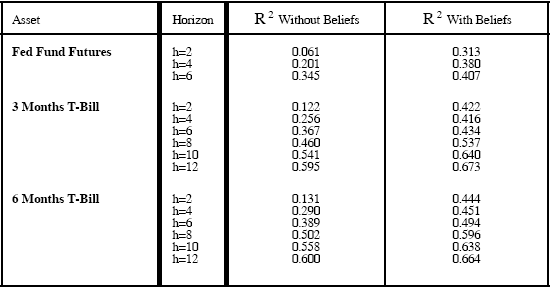Is risk premium variation principally a consequence of changes in objective business conditions, or is some human dynamic important? In their November 2007 paper entitled “Diverse Beliefs and Time Variability of Risk Premia”, Mordecai Kurz and Maurizio Motolese examine the effect of diverse but individually rational market beliefs on risk premiums. They define belief as a variable independent of all observed fundamentals, with its own dynamic that reflects changes in the distribution of investor risk perceptions. Using monthly interest rate forecasts compiled by Blue Chip Financial Forecasts since 1983 to measure market beliefs and associated actual interest rate data, they conclude that:
- Fluctuations in market beliefs, above and beyond the effect of business cycles, make significant contributions to risk premium variability.
- The market belief component of the mean risk premium for such assets as Federal Funds Futures and 3-month and 6-month Treasury bills frequently exceeds 50% of the premium for horizons of one to 12 months.
- The shorter the horizon, the greater the influence of market belief. Market belief dominates economic fundamentals in forming the premium for horizons of less than two months.
- Investor optimism (pessimism) about future economic conditions depresses (elevates) the risk premium, supporting “bull” (“bear”) market conditions.
- An increase in diversity of market opinions decreases the risk premium because markets
with more diverse beliefs are more stable. Conversely, markets with a high degree of unanimity are more risky because small changes in market belief cause sharp price changes as many investors try to execute similar trades.
The following table, taken from the paper, summarizes the explanatory power (R-squared statistic) of market beliefs for excess returns on Federal Funds Rate futures, 3-month Treasury bills and 6-month Treasury bills over various horizons (“h” in months). The table shows that the predictive power of market beliefs declines with the forecasting horizon and dominates that of macroeconomic fundamentals for short holding periods.

In summary, perceptions move markets. Market beliefs, which may express mistaken forecasts, are at least as important to asset pricing as macroeconomic fundamentals.